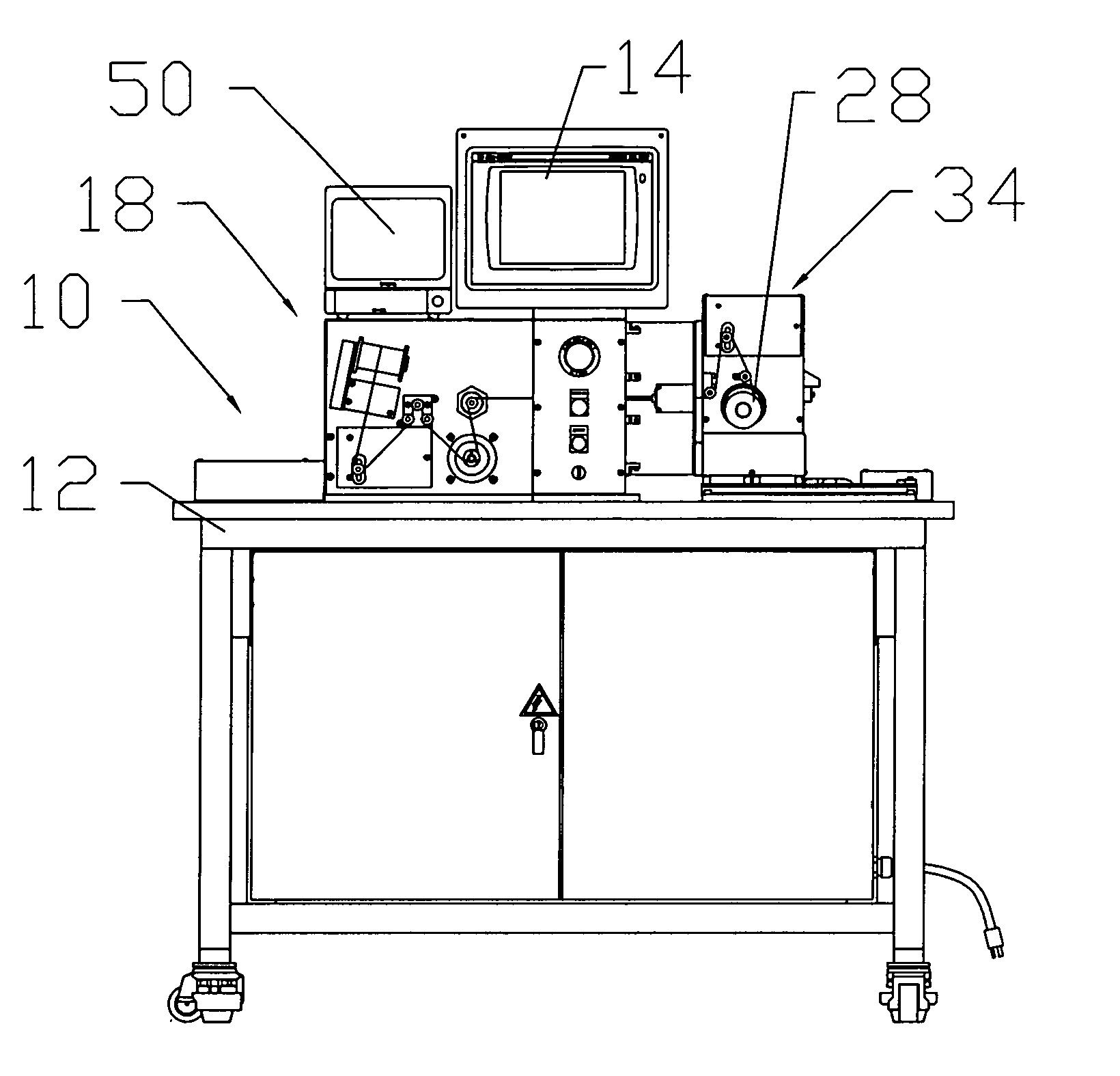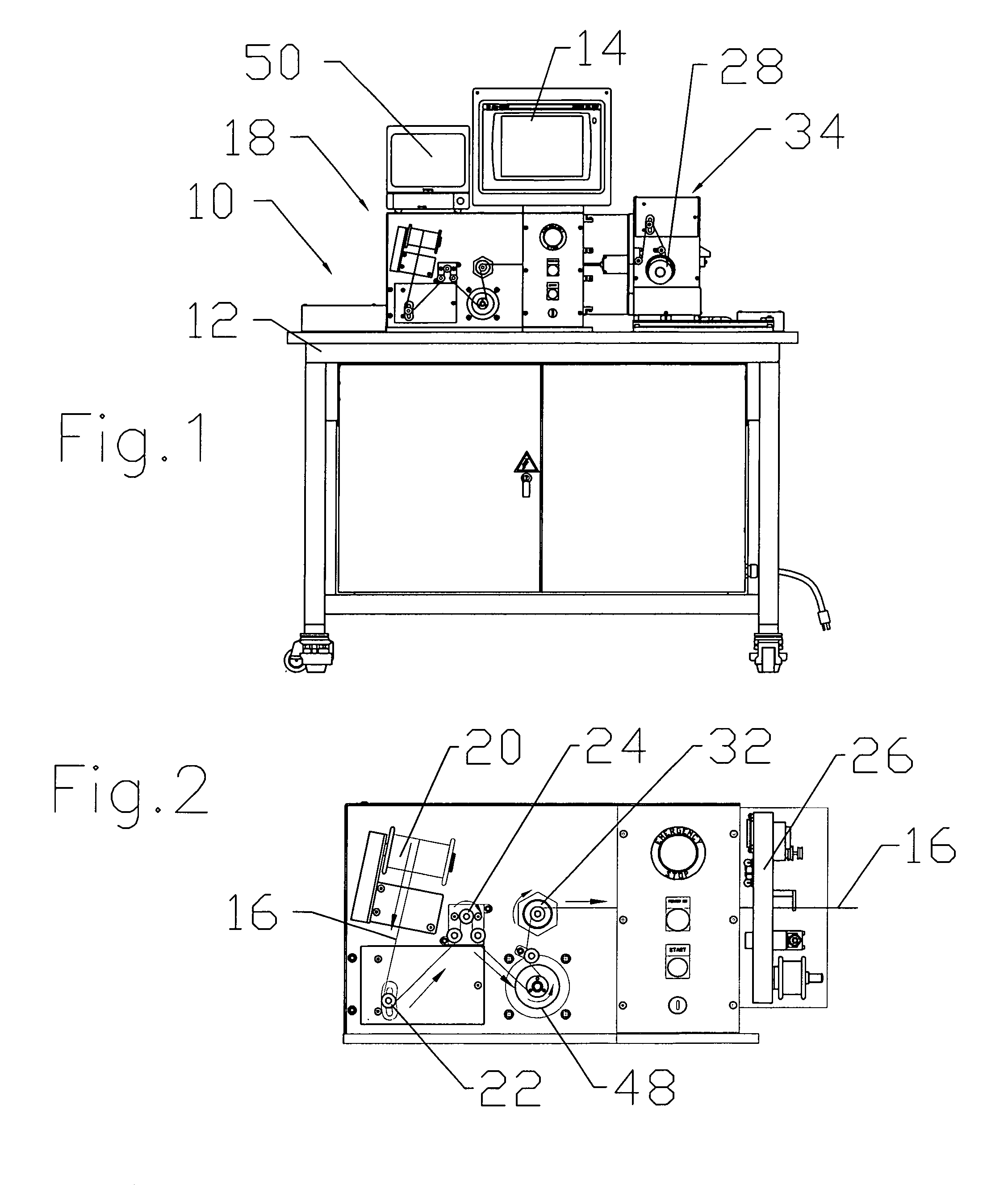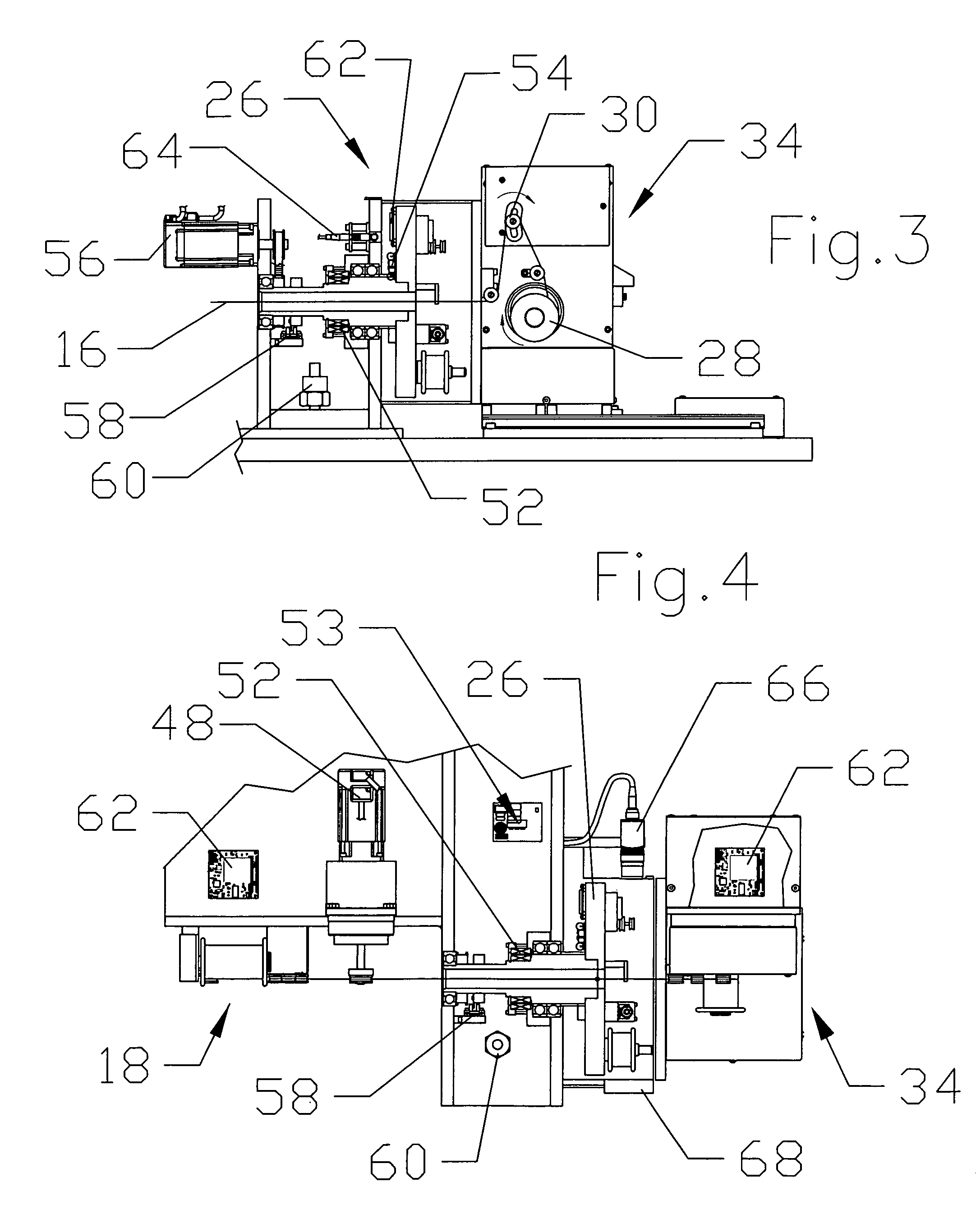Tension control system for a continuous winding machine
a technology of continuous winding machine and control mechanism, which is applied in the direction of rolling mill control device, manufacturing tools, transportation and packaging, etc., can solve the problems of inability to meet the requirements of coil construction, inability to use common feed rate control techniques, and variable filament tension, etc., to achieve winding to tolerances and easy handling of thin filaments
- Summary
- Abstract
- Description
- Claims
- Application Information
AI Technical Summary
Benefits of technology
Problems solved by technology
Method used
Image
Examples
Embodiment Construction
The present invention is a continuous winding machine 10. The mechanical structure of the winding machine 10 can best be understood with reference to FIGS. 1-6. The winding machine 10 is installed on a movable mounting table 12. A touchscreen 14 enables the user to easily program the various operations performed by the machine 10 by choosing a pre-installed manufacturing recipe, and / or creating modified recipe settings.
The central element of the product being manufactured by the winding operation is a mandrel 16, the core of the wound product. The mandrel 16 is fed into the winding machine 10 from a mandrel supply assembly 18. The mandrel 16 is fed off a mandrel supply spool 20, across a first dancer 22, and then across a first load cell 24 around the pitch drive 48 and over a second load cell 32 associated with a mandrel takeup spool 28.
The mandrel 16 is then fed into the cylindrical housing of the winding module 26. After the mandrel 16 has passed through the winding module 26, th...
PUM
| Property | Measurement | Unit |
|---|---|---|
| angle | aaaaa | aaaaa |
| tension | aaaaa | aaaaa |
| Winding Speed | aaaaa | aaaaa |
Abstract
Description
Claims
Application Information
 Login to View More
Login to View More - R&D
- Intellectual Property
- Life Sciences
- Materials
- Tech Scout
- Unparalleled Data Quality
- Higher Quality Content
- 60% Fewer Hallucinations
Browse by: Latest US Patents, China's latest patents, Technical Efficacy Thesaurus, Application Domain, Technology Topic, Popular Technical Reports.
© 2025 PatSnap. All rights reserved.Legal|Privacy policy|Modern Slavery Act Transparency Statement|Sitemap|About US| Contact US: help@patsnap.com



